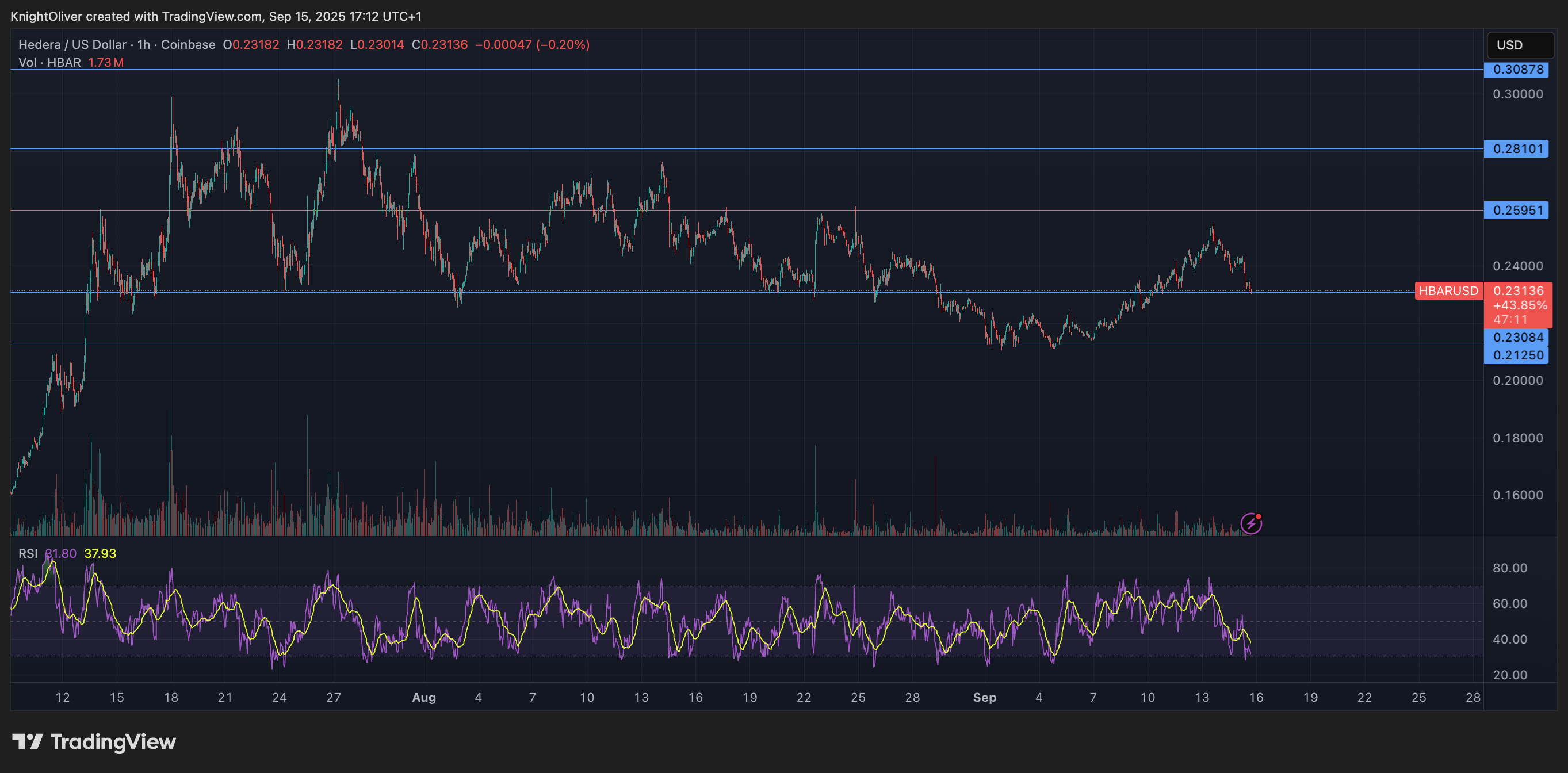Uncategorized
Privacy Is Key to the Next Phase of Ethereum

Ethereum introduced smart contracts to the world and spurred a Cambrian Explosion of innovation, including DeFi, NFTs, DAOs, and a universe of dApps. On July 30, the network will hit its 10 year anniversary.
The past decade of the ecosystem focused on proving Ethereum’s functionality and capabilities as well as enhancing efficiency through upgrades like The Merge, which marked the transition from Proof-of-Work to Proof-of-Stake. The next era requires a pivot to match the more mature ecosystem that it now supports — one that includes not just Web3 natives but financial institutions, governments, corporations, and people who don’t know what «yield farming» is but who may want to get a loan for their house with crypto collateral.
Amid increasing government and institutional involvement, the hope that crypto will contribute to creating a «free and open society,» an ideal originally expressed in A Cypherpunk’s Manifesto, is sometimes lost. For Ethereum to make good on that original promise, privacy must be a core tenant of its future.
Privacy is identity
Some degree of privacy is essential for financial safety and freedom. You wouldn’t want to reveal your net worth to the cashier every time you buy a latte or a slice of pizza, but this is essentially how crypto has been operating for the past decade — with the radical transparency of immutable ledgers recording every transaction publicly.
Not only does this level of transparency put individuals at risk for phishing and other attacks, but it also hinders the involvement of institutions that do not want to give their competitors an edge by revealing their activity. Though it is possible to retain pseudonymity through never interacting with a centralized platform, this is not practical for interactions that touch the real world.
People and businesses need to be able to interact with governments and banks through ID-linked accounts, and the key to enabling these types of interactions — without putting personal information in jeopardy to theft and misuse — is programmable privacy.
The solution is ZKP-powered technology
The solution is already here: Zero Knowledge Proof (ZKP)-powered smart contracts give users control over what information to share and with whom. With the programmable privacy enabled by ZKPs integrated into Ethereum at a foundational level, a world of applications are not just feasible but practical.
Products and services must comply with the regulatory requirements of each jurisdiction in which they operate. This includes collecting customer information in accordance with KYC guidelines, Countering-the-Financing-of-Terrorism (CFT) and AML laws. Typical KYC processes involve sharing some form of ID, such as a passport or driver’s license, along with personally identifying information (PII) like name, date of birth and address.
If captured by bad actors, this type of information can be used to target people in phishing scams and other types of attacks (see recent Coinbase data breach). Rather than requiring people to reveal their PII and make themselves and their data vulnerable to attack and theft, ZKP-powered solutions allow people to prove they are not operating out of sanctioned countries and to prove eligibility to participate, all without giving the platform their data and contributing to potential honey pots.
The possibilities enabled by ZKPs go well beyond compliance too. Airdrops currently suffer from Sybil attacks where AI bots beat out real human participants to give certain participants an outsized advantage. The same issue applies to decentralized governance. Decision making in a DAO cannot be truly fair and free unless it can be proven that the right number of votes are going to the right number of people — not bots. ZKPs offer a solution with «proof of humanity» via data provenance tools like zkPassport, zkEmail, and zkTLS.
Digital payments must provide the same privacy as cash. Payments in dollars, euros, and other sovereign currencies via stablecoins are another important factor in enabling mass adoption of DeFi applications, but this will never take off en masse without privacy guarantees. The same applies to decentralized mortgages, loans, and essentially any type of legal contract, which all require IDs to execute.
There are many other applications made possible with privacy as a core tenant of the Ethereum ecosystem. These include proving the authenticity of product or restaurant reviews, enabling secure digital voting, decentralized escrow services, carbon offsetting tracking, proving builder status on GitHub anonymously, and employment skill verification — all done in a secure, privacy-preserving way that doesn’t involve the sharing of sensitive PII to centralized providers.
Creating a culture that demands privacy
Though the technology exists to implement ZKP solutions today, challenges will need to be overcome before privacy is comprehensively reflected as a core value throughout the Ethereum ecosystem. Technical challenges with implementing ZKP-powered tech include the greater expense of ZKP transactions. Building ZKP-focused applications is also more complicated, posing a learning curve for builders. These are all solvable issues.
Other challenges are cultural: creating universal buy-in from the spectrum of participants in the value of privacy and coordinating the implementation of solutions across the tech stack, from protocol to wallet. There is also the misguided perception hurdle of privacy’s associations with illicit activity.
Changing technology is ultimately easier than changing minds, but the core ethos of crypto is, after all, a philosophical one — a technology that underpins a belief in freedom and the privacy of individuals and entities. If in another 10 years, we look back on another decade of Ethereum and can celebrate its role in enabling greater financial freedom, an emphasis on privacy will be key.
Uncategorized
Wall Street Bank Citigroup Sees Ether Falling to $4,300 by Year-End

Wall Street giant Citigroup (C) has launched new ether (ETH) forecasts, calling for $4,300 by year-end, which would be a decline from the current $4,515.
That’s the base case though. The bank’s full assessment is wide enough to drive an army regiment through, with the bull case being $6,400 and the bear case $2,200.
The bank analysts said network activity remains the key driver of ether’s value, but much of the recent growth has been on layer-2s, where value “pass-through” to Ethereum’s base layer is unclear.
Citi assumes just 30% of layer-2 activity contributes to ether’s valuation, putting current prices above its activity-based model, likely due to strong inflows and excitement around tokenization and stablecoins.
A layer 1 network is the base layer, or the underlying infrastructure of a blockchain. Layer 2 refers to a set of off-chain systems or separate blockchains built on top of layer 1s.
Exchange-traded fund (ETF) flows, though smaller than bitcoin’s (BTC), have a bigger price impact per dollar, but Citi expects them to remain limited given ether’s smaller market cap and lower visibility with new investors.
Macro factors are seen adding only modest support. With equities already near the bank’s S&P 500 6,600 target, the analysts do not expect major upside from risk assets.
Read more: Ether Bigger Beneficiary of Digital Asset Treasuries Than Bitcoin or Solana: StanChart
Uncategorized
XLM Sees Heavy Volatility as Institutional Selling Weighs on Price

Stellar’s XLM token endured sharp swings over the past 24 hours, tumbling 3% as institutional selling pressure dominated order books. The asset declined from $0.39 to $0.38 between September 14 at 15:00 and September 15 at 14:00, with trading volumes peaking at 101.32 million—nearly triple its 24-hour average. The heaviest liquidation struck during the morning hours of September 15, when XLM collapsed from $0.395 to $0.376 within two hours, establishing $0.395 as firm resistance while tentative support formed near $0.375.
Despite the broader downtrend, intraday action highlighted moments of resilience. From 13:15 to 14:14 on September 15, XLM staged a brief recovery, jumping from $0.378 to a session high of $0.383 before closing the hour at $0.380. Trading volume surged above 10 million units during this window, with 3.45 million changing hands in a single minute as bulls attempted to push past resistance. While sellers capped momentum, the consolidation zone around $0.380–$0.381 now represents a potential support base.
Market dynamics suggest distribution patterns consistent with institutional profit-taking. The persistent supply overhead has reinforced resistance at $0.395, where repeated rally attempts have failed, while the emergence of support near $0.375 reflects opportunistic buying during liquidation waves. For traders, the $0.375–$0.395 band has become the key battleground that will define near-term direction.

Technical Indicators
- XLM retreated 3% from $0.39 to $0.38 during the previous 24-hours from 14 September 15:00 to 15 September 14:00.
- Trading volume peaked at 101.32 million during the 08:00 hour, nearly triple the 24-hour average of 24.47 million.
- Strong resistance established around $0.395 level during morning selloff.
- Key support emerged near $0.375 where buying interest materialized.
- Price range of $0.019 representing 5% volatility between peak and trough.
- Recovery attempts reached $0.383 by 13:00 before encountering selling pressure.
- Consolidation pattern formed around $0.380-$0.381 zone suggesting new support level.
Disclaimer: Parts of this article were generated with the assistance from AI tools and reviewed by our editorial team to ensure accuracy and adherence to our standards. For more information, see CoinDesk’s full AI Policy.
Uncategorized
HBAR Tumbles 5% as Institutional Investors Trigger Mass Selloff

Hedera Hashgraph’s HBAR token endured steep losses over a volatile 24-hour window between September 14 and 15, falling 5% from $0.24 to $0.23. The token’s trading range expanded by $0.01 — a move often linked to outsized institutional activity — as heavy corporate selling overwhelmed support levels. The sharpest move came between 07:00 and 08:00 UTC on September 15, when concentrated liquidation drove prices lower after days of resistance around $0.24.
Institutional trading volumes surged during the session, with more than 126 million tokens changing hands on the morning of September 15 — nearly three times the norm for corporate flows. Market participants attributed the spike to portfolio rebalancing by large stakeholders, with enterprise adoption jitters and mounting regulatory scrutiny providing the backdrop for the selloff.
Recovery efforts briefly emerged during the final hour of trading, when corporate buyers tested the $0.24 level before retreating. Between 13:32 and 13:35 UTC, one accumulation push saw 2.47 million tokens deployed in an effort to establish a price floor. Still, buying momentum ultimately faltered, with HBAR settling back into support at $0.23.
The turbulence underscores the token’s vulnerability to institutional distribution events. Analysts point to the failed breakout above $0.24 as confirmation of fresh resistance, with $0.23 now serving as the critical support zone. The surge in volume suggests major corporate participants are repositioning ahead of regulatory shifts, leaving HBAR’s near-term outlook dependent on whether enterprise buyers can mount sustained defenses above key support.

Technical Indicators Summary
- Corporate resistance levels crystallized at $0.24 where institutional selling pressure consistently overwhelmed enterprise buying interest across multiple trading sessions.
- Institutional support structures emerged around $0.23 levels where corporate buying programs have systematically absorbed selling pressure from retail and smaller institutional participants.
- The unprecedented trading volume surge to 126.38 million tokens during the 08:00 morning session reflects enterprise-scale distribution strategies that overwhelmed corporate demand across major trading platforms.
- Subsequent institutional momentum proved unsustainable as systematic selling pressure resumed between 13:37-13:44, driving corporate participants back toward $0.23 support zones with sustained volumes exceeding 1 million tokens, indicating ongoing institutional distribution.
- Final trading periods exhibited diminishing corporate activity with zero recorded volume between 13:13-14:14, suggesting institutional participants adopted defensive positioning strategies as HBAR consolidated at $0.23 amid enterprise uncertainty.
Disclaimer: Parts of this article were generated with the assistance from AI tools and reviewed by our editorial team to ensure accuracy and adherence to our standards. For more information, see CoinDesk’s full AI Policy.
-

 Business11 месяцев ago
Business11 месяцев ago3 Ways to make your business presentation more relatable
-

 Fashion11 месяцев ago
Fashion11 месяцев agoAccording to Dior Couture, this taboo fashion accessory is back
-

 Entertainment11 месяцев ago
Entertainment11 месяцев ago10 Artists who retired from music and made a comeback
-

 Entertainment11 месяцев ago
Entertainment11 месяцев ago\’Better Call Saul\’ has been renewed for a fourth season
-

 Entertainment11 месяцев ago
Entertainment11 месяцев agoNew Season 8 Walking Dead trailer flashes forward in time
-

 Business11 месяцев ago
Business11 месяцев ago15 Habits that could be hurting your business relationships
-

 Entertainment11 месяцев ago
Entertainment11 месяцев agoMeet Superman\’s grandfather in new trailer for Krypton
-

 Entertainment11 месяцев ago
Entertainment11 месяцев agoDisney\’s live-action Aladdin finally finds its stars





